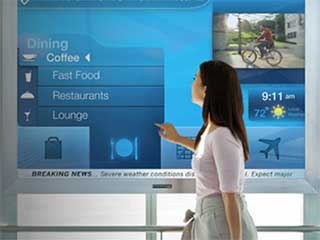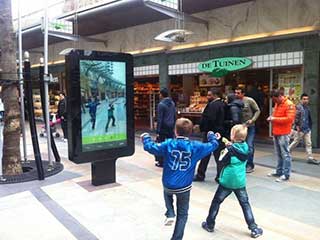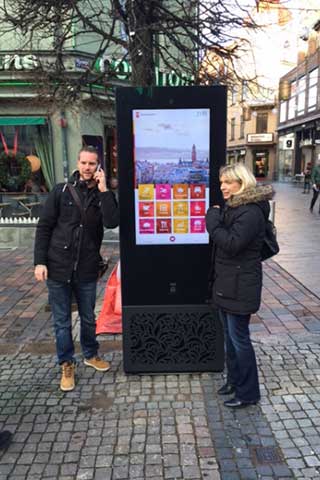Smart Digital Signage and Screens
From time to time the authors writing for this Journal turn to the topic of tendencies in the area of digital screens, outdoor signage and other advertising-related equipment trying to divine not only the general technological trends but also the bottlenecks and problems on the way to the digital society.
 Smart Digital Signage
Smart Digital SignageToday we wanted to concentrate on such basic concepts within digital technology area as data analysis, augmented reality, elements of artificial intelligence, interactive media and personal automation.
We are still far from the time when robot-helpers will perform some of our duties and take care of our household needs. But already we are surrounded by personal gadgets that need personalization and tuning to automate and optimize standard functions.
Technology development forces people to become more technology-minded. Specialists from various areas are urgently learning computer languages to automate their routine duties. The requirement for personal automation suggests the development of more user-friendly interfaces.
We live at a time when people need speed and fast data analysis. Increase in response time from the equipment is only possible when the digital equipment is sufficiently smart and all processes are automated. Only then data processing will be improved sufficiently to become helpful.
 Interactive Digital Signage
Interactive Digital SignageTime is money in the world of business. Since content remains the foundation of the digital informational and advertising broadcasting, there is a constant need for content optimization so that clients better understand and memorize it. According to modern marketing strategies companies must interact with clients simultaneously via several different channels: different advertising methods, mobile applications, social networks, offline sales points etc.
To accomplish this, various digital devices that make up the network of modern smart cities (CCTV cameras, personal mobile devices and applications) must be linked together. A huge array of sensors that analyze personal behavioral patterns acquires additional function of personalizing data and targeting not just segments of the population (as it was done previously) but specific customers that are recognized by the system.
There are showcases when a client entering a restaurant is automatically recognized and is offered a personalized menu based on his previous orders, gastronomical preferences, health condition and dietary recommendations.
In other words, smart digital advertising will instantaneously discard all unnecessary and superfluous data to speed up and optimize decision making process. The improved algorithms for data processing will significantly improve client service to get maximum satisfaction.
 Informational Digital Signage
Informational Digital SignageThe key aspects in smart data analysis will be face recognition and personalization based on open data sources and information from personal gadgets of potential customers. Doubtless, all standard statistical data like age, gender, physical build, known preferences and tastes, style in clothes, and all others that could be assessed.
In the near future, as the face recognition systems improve a digital board (screen) at the door of a building where you go will greet you by the name or title and would suggest a place where you have to go depending on the analysis of your potential needs. A digital screen will stop being a faceless electronic surface and will turn into a powerful method for personalized marketing. Digital gadgets will become your personal assistants ready to come up with suggestions based on the situation.
Personification of advertising or informational support is only possible if the software used will be able to make decisions independently: what and when to show. Is this not a function of the artificial intelligence however simple?
The smart device will conduct an instantaneous analysis of information collected from different sensors and data bases, will offer an optimal content at the right moment. For example, why a customer who is buying cheese look at the advertising clip of a toothpaste?
If digital screens are ready to assume functions of the artificial intelligence, service zones with such screens will soon function without human assistance. Soon clients will need to readjust for a new type of interaction: man-machine. Recently there were news of such innovators as Amazon Go and Alibaba who are experimenting with digital fully automated kiosks.
Naturally, someone will consider these tendencies threatening. After all, people will turn into objects under observation. However this is a different matter of safety and restricted access to data bases and large data protection. We will dedicate other articles to this subject later.





